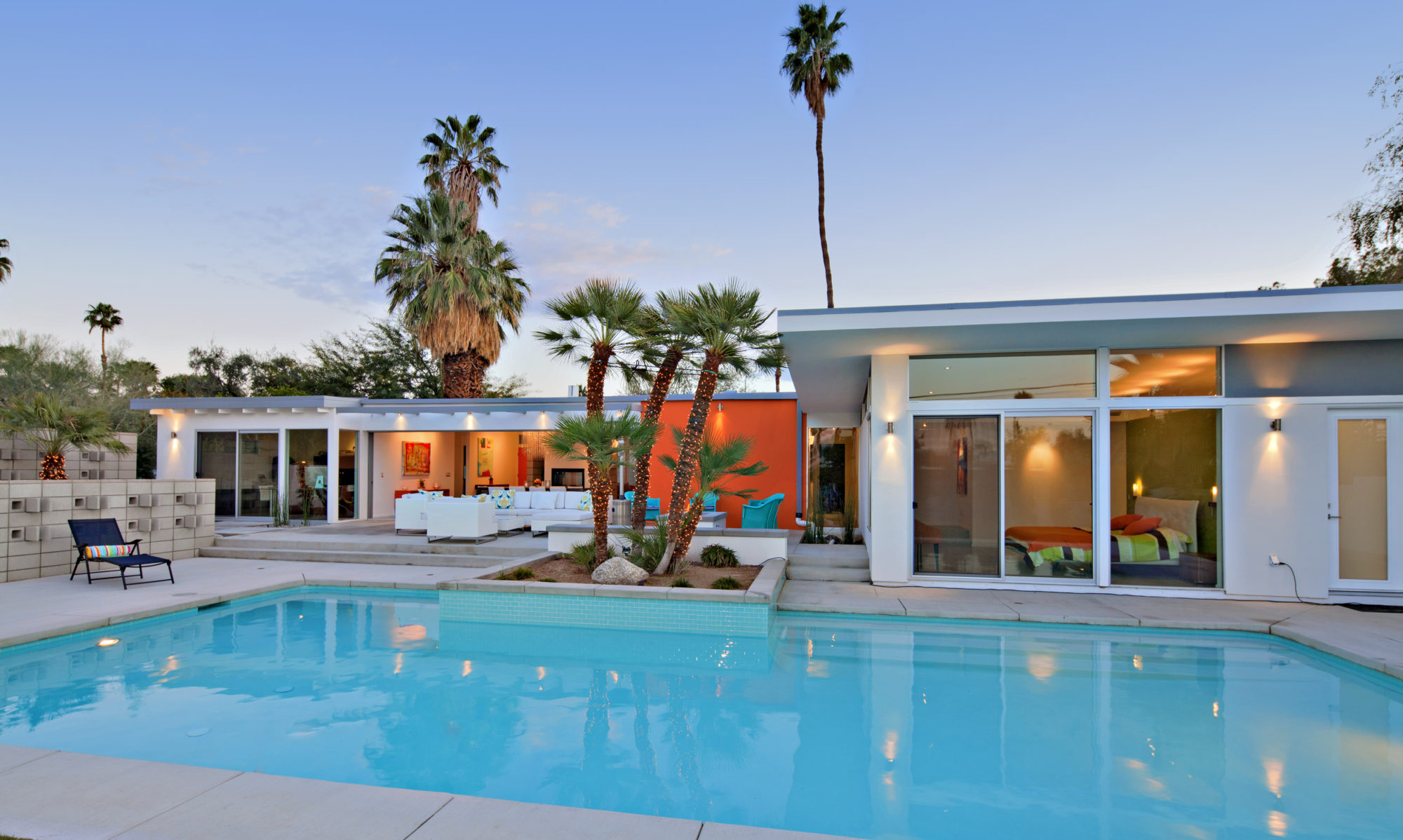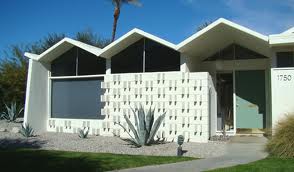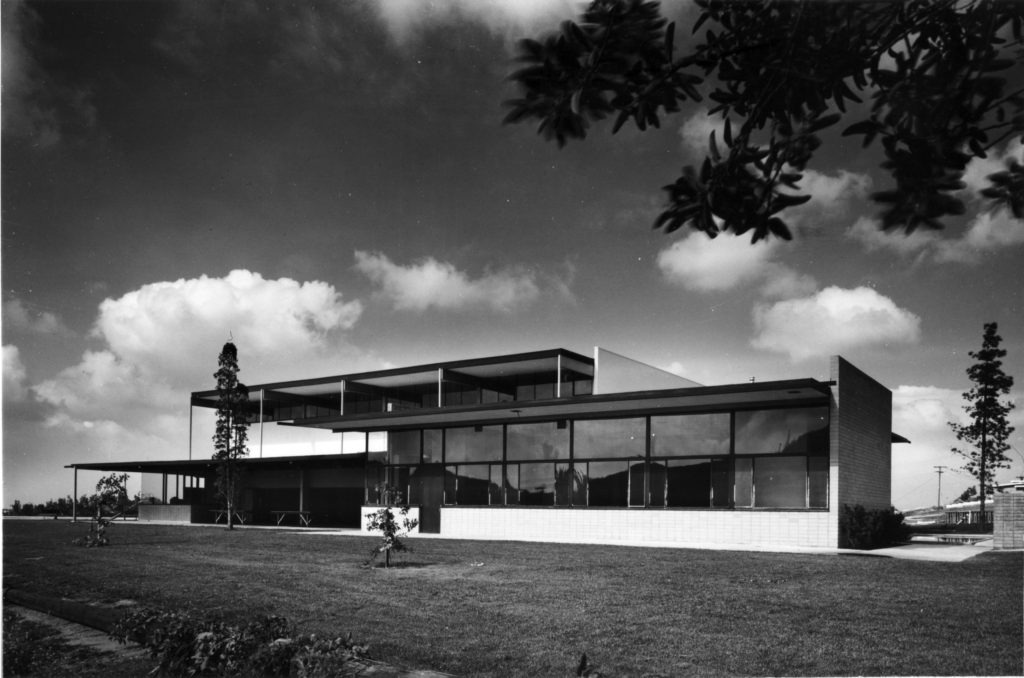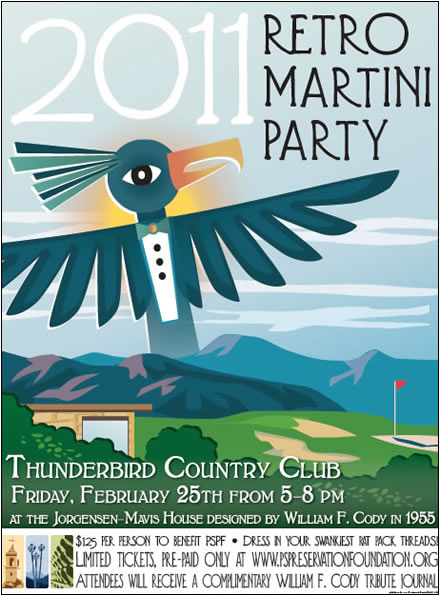
One of the highlights of this year’s Modernism Week is a continuing retrospective of architect Don Wexler’s 60-year career titled Steel and Shade: The Architecture of Donald Wexler at the Palm Springs Museum, on view through May 29.
A symposium on Wexler’s legacy will be on Saturday, February 26 from 9 a.m. to 6 p.m. at the museum. Museum architecture and design curator Sidney Williams and co-curator Dr. Lauren Weiss Bricker will moderate a discussion of contemporary architects who continue in Wexler’s legacy of environmentally sensitive, innovative designs. www.psmuseum.org/councils
Wexler’s iconic designs such as the folded plate roof lines of the Alexander Steel Homes, overhangs that shade walls of glass, clerestory windows that bring in natural light, and prefabricated all-steel structures are some examples of active and passive solar energy uses and sustainability that Wexler employed long before these concepts were trendy.
Celebrated as one of Palm Springs’ most prolific architects of this time, the exhibition features a full-scale sectional steel model illustrating Wexler’s prefabrication system, and which gives visitors the experience of inhabiting a Wexler-designed home. Drawings, photographs and models from the architect and models built in collaboration with architecture students and Cal Poly Pomona are also part of the exhibit. http://tmagazine.blogs.nytimes.com/2011/02/17/seeing-things-donald-wexler.desert-modernist
Wexler’s all-steel Alexander houses, designed in 1962 with structural engineer Bernard Perlin, were affordable, elegant and quick to assemble on site; the perfect answer to the postwar housing boon.
“Steel, concrete and glass are ideal materials for the desert,” Wexler said. “They are inorganic and don’t deteriorate in the extreme temperatures of the desert.” www.eichlernetwork.com/desert_chron12.html
Wexler’s innovative pre-fab system could be configured in a variety of ways, using a post-and-beam structural steel frame, a system of panelized opaque steel walls, and steel framed glass windows and doors. Several prototype model homes were build and these relatively maintenance-free homes are still pristine after nearly 50 years.
Wexler attended the University of Minnesota School of Architecture in the years following World War II. He graduated in 1950, one of the first generation of American architects trained in the concepts of modernism.
Wexler moved to Palm Springs in 1952 after working with acclaimed Modernist architect Richard Neutra in Los Angeles. Wexler recalls that “there was a collective sense that we could do anything; we could accomplish anything; we could experiment.”
Wexler is all about logic and efficiency, according to a feature by Morris Newman, The Quiet Elegance of Donald Wexler, in this month’s Palm Springs Life.
“His buildings fit together tightly, like parts of a machine. Nothing seems out of place, and details rarely distract from the whole. His approach to building dates back several decades, when the elegance of architecture was supposed to be a byproduct of research and good thinking. He is as interested in building technology as a general contractor and as aware of cost as a developer,” writes Newman. www.palmspringslife.com/Palm-Springs-Life/February-2011/the-quiet-elegance-of-donald-wexler.
Just as his early work was influenced by Neutra, William F. Cody, Eichler and others, Wexler also inspires a young generation of architects such as Lance O’Donnell, Taalman Koch Architecture, Narendra Patel and Ana Escalante. www.mydesert.com (search under Wexler)
His work is still very visible and viable today in numerous public projects including his largest, the Palm Springs International Airport, a building that is both welcoming and functional.
“Can you imagine walking though the building’s doors and the first thing you see is Mount San Jacinto?” said Williams.
Wexler also designed the Palm Springs Police Department and Jail, the Larson Justice Center in Indio, the Merrill Lynch Building in Palm Springs, the original Palm Springs Spa Hotel’s Bath House(a joint venture with Rick Harrison, William Cody and Pierre Koenig), the Desert Water Agency, El Rancho Vista Estates, Royal Hawaiian Estates (Palm Springs’ first residential historic district), Palm Springs Medical Clinic, Union 76 gas station, numerous schools and celebrity homes.
Wexler’s celebrity homes included the stunning Dinah Shore and Leff/Florsheim houses, actor Alan and Sue Ladd’s home, one that eventually became Ann and Kirk Douglas’, actress Andrea Leeds and her race-horse and Buick agency owner husband Bob Howard, and a project for Frank Sinatra.
Wexler hasn’t stopped working. Currently under construction is Hamptons Modern, bringing California modernism to the East End of Long Island. Developer Marnie McBryde has plans to build up to 50 Wexler-designed houses, which are adaptations of the 1964 Dinah Shore house.
Some fascinating books on Wexler available through Palm Springs Preservation Foundation include the Wexler Tribute Journal, and Donald Wexler: Architect by Patrick McGrew.
More Palm Springs Modern events coming up: The 10th Alexander Weekend, March 25-27, 2011, celebrating the Alexander tract homes’ architectural importance. www.pspreservationfoundation.org.
Pamela Bieri

















